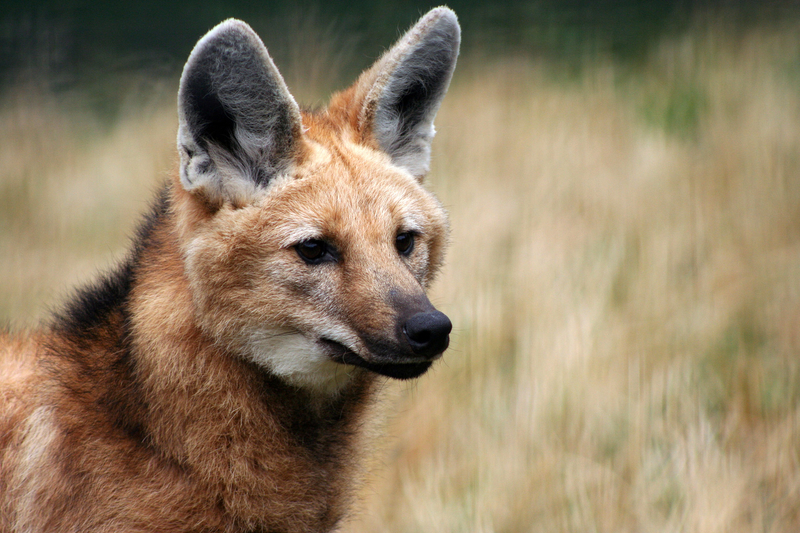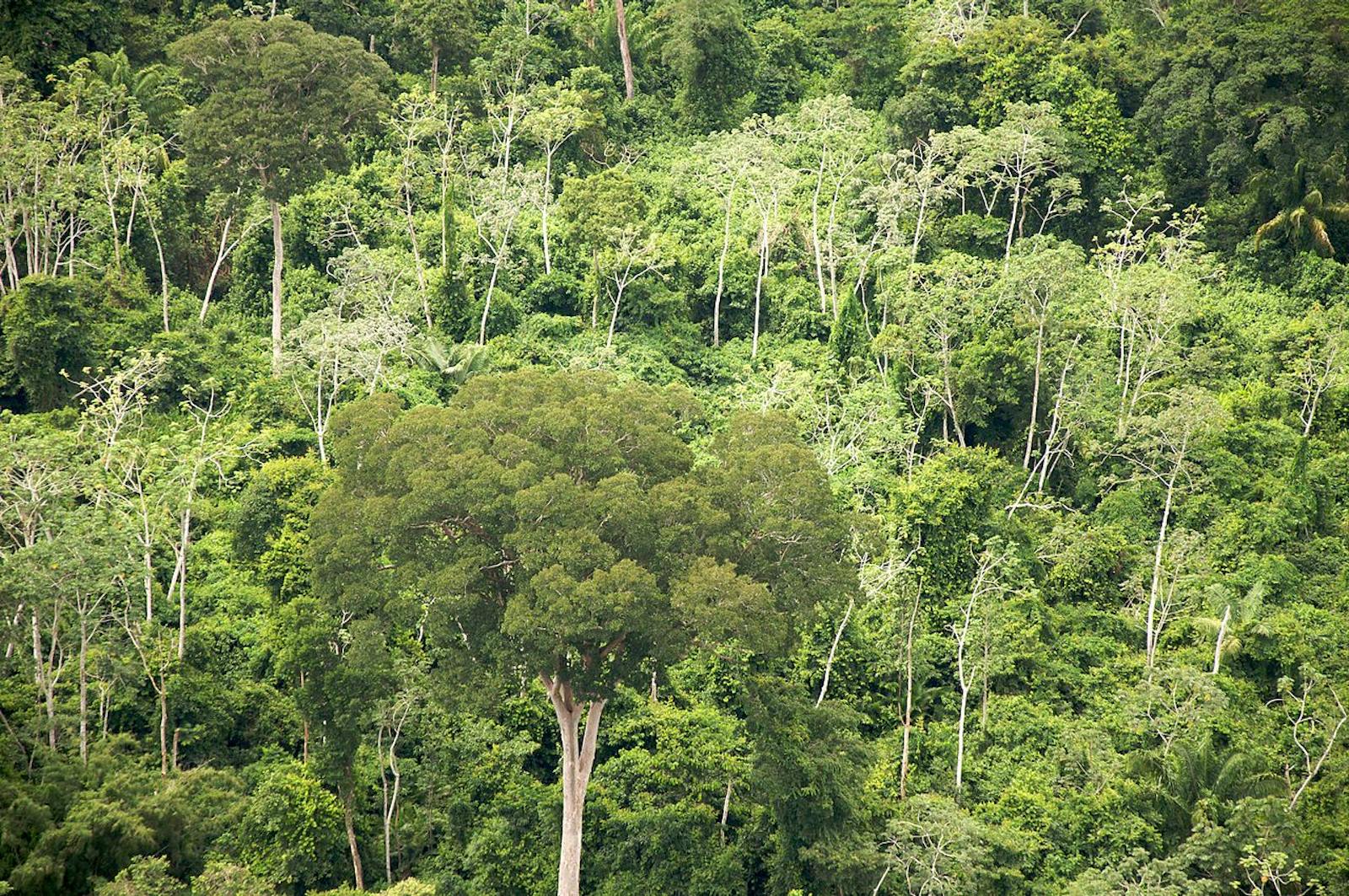Chiquitano Dry Forests
The ecoregion’s land area is provided in units of 1,000 hectares. The conservation target is the Global Safety Net (GSN1) area for the given ecoregion. The protection level indicates the percentage of the GSN goal that is currently protected on a scale of 0-10. N/A means data is not available at this time.
Bioregion: Pantanal Flooded Grasslands & Dry Forests (NT12)
Realm: Southern America
Ecoregion Size (1000 ha):
23,107
Ecoregion ID:
529
Conservation Target:
60%
Protection Level:
4
States: Bolivia, Brazil
The maned wolf is the largest canid (the dog family) in South America, and the tallest of all living species of wild canids. They have a large range, but low population levels throughout. Their highest numbers are in Brazil, and they are known to occur throughout the Chiquitano Dry Forests ecoregion. Interestingly the maned wolf is closely related to the grey wolves or other living canid (more like a large fox on stilt legs) and is the only species in the genus Chrysocyon.
Previously believed to be nocturnal, the maned wolves are found to be cathemeral in recent studies, meaning they are sporadically active based on temperature and season. Their long legs not only allow them to have advantage in seeing over tall grass, but also to become excellent jumpers and runners as well.

The flagship species of the Chiquitano Dry Forests ecoregion is the maned wolf. Image credit: Courtesy of Robert Elsemore
Roughly in the center of the South American continent, most of the Chiquitano forest lies within the eastern lowlands of Santa Cruz, Bolivia, with smaller patches extending into western Mato Grosso, Brazil. Situated at the southern limit of Amazonian forests, this forest marks a transition to drier thorny scrub forests further south in the Chaco. Characterized by a strong dry season during winter, the region experiences an annual water deficit of 500 mm, against an annual rainfall of 936 mm.
Hydrologically, the ecoregion straddles the watershed divide between two major basins in South America: Amazonas and La Plata. Vegetation are very strongly dependent on drainage patterns. The most abundant is a species in the cashew family, Schinopsis brasiliensis, reaching 20 m. It is often joined by Anadenanthera macrocarpa, Caesalpinia pluviosa, Machaerium scleroxylon, the endangered Amburana cearensis, and Argentine cedar trees. All combined, they make up about 80% of the canopy. There are 4 other vegetation levels; emergents, reaching 30 m, and arboreal, shrubby and herbaceous understories.
Surprisingly, the Chiquitano forest is floristically more similar to the geographically distant Caatinga, Misiones, and Tucumano forests than to its neighbors in the Chaco and Cerrado ecoregions. This makes it a promising site for adaptive radiation research. Chiquitano forest contained the highest mammalian species richness of several biomes in the ecoregion, with 42 species accounted for in less than two weeks of surveys. Notable inclusions are the vulnerable giant armadillo, the endangered giant otter, and the near threatened maned wolf.
This is the largest patch of healthy dry forest ecosystem today and one of the most biologically diverse dry forests in the world. Two large blocks of forest in outstanding conservation condition lie east of San Jose de Chiquitos, split into a northern and a southern block by a road with ranches along it. Two protected areas, Otuquis and San Matias, include important parts of this remnant forest, but linkages between them and effective management are lacking and urgently needed. The Tucavaca Valley is the middle area between the two and to be put under protection to provide long term ecological viability.
Dry forests are the most endangered tropical forest in the world and the Chiquitano forest is no exception. Habitat conversion due to agricultural expansion and unplanned settlement is the major threat. Habitat degradation comes next in the form of the Paraguay-Parana Hidrovia Dam project and uncontrolled logging.
The third major threat is habitat fragmentation that is promoted by new or improved access ways built by multinational energy companies (pipelines, powerlines and electricity generation) and the transportation sector (roads, ports). Despite being considered globally outstanding for its biological distinctiveness, the ecoregion is critically threatened and faces an uncertain future.
The priority conservation actions for the next decade are to: 1) create biological corridors between the Otuquis and San Matias protected areas; 2) place the Tucavaca Valley under protection; and 3) enforce sustainable forest material extraction management.
Citations
1. Landivar, R. 2018. Central South America: Bolivia into Brazil https://www.worldwildlife.org/ecoregions/nt0212 Accessed October 4, 2018.
2. ENTRIX. 1999. Supplemental Environmental Assessment, Cuiabá Pipeline – Bolivian Portion, Phase I Direct Impacts. ENTRIX, INC. Houston, Texas.
3. Dinerstein, E., D. M. Olson, D. L. Graham, A. L. Webster, S. A. Primm, M. P. Bookbinder, and G. Ledec. 1995. A conservation assessment of the terrestrial ecoregions of Latin America and the Caribbean. DC.: WWF and The World Bank.
4. Paula, R.C. & DeMatteo, K. 2015. Chrysocyon brachyurus (errata version published in 2016). The IUCN Red List of Threatened Species 2015: e.T4819A88135664. http://dx.doi.org/10.2305/IUCN.UK.2015-4.RLTS.T4819A82316878.en. Accessed October 4, 2018.



